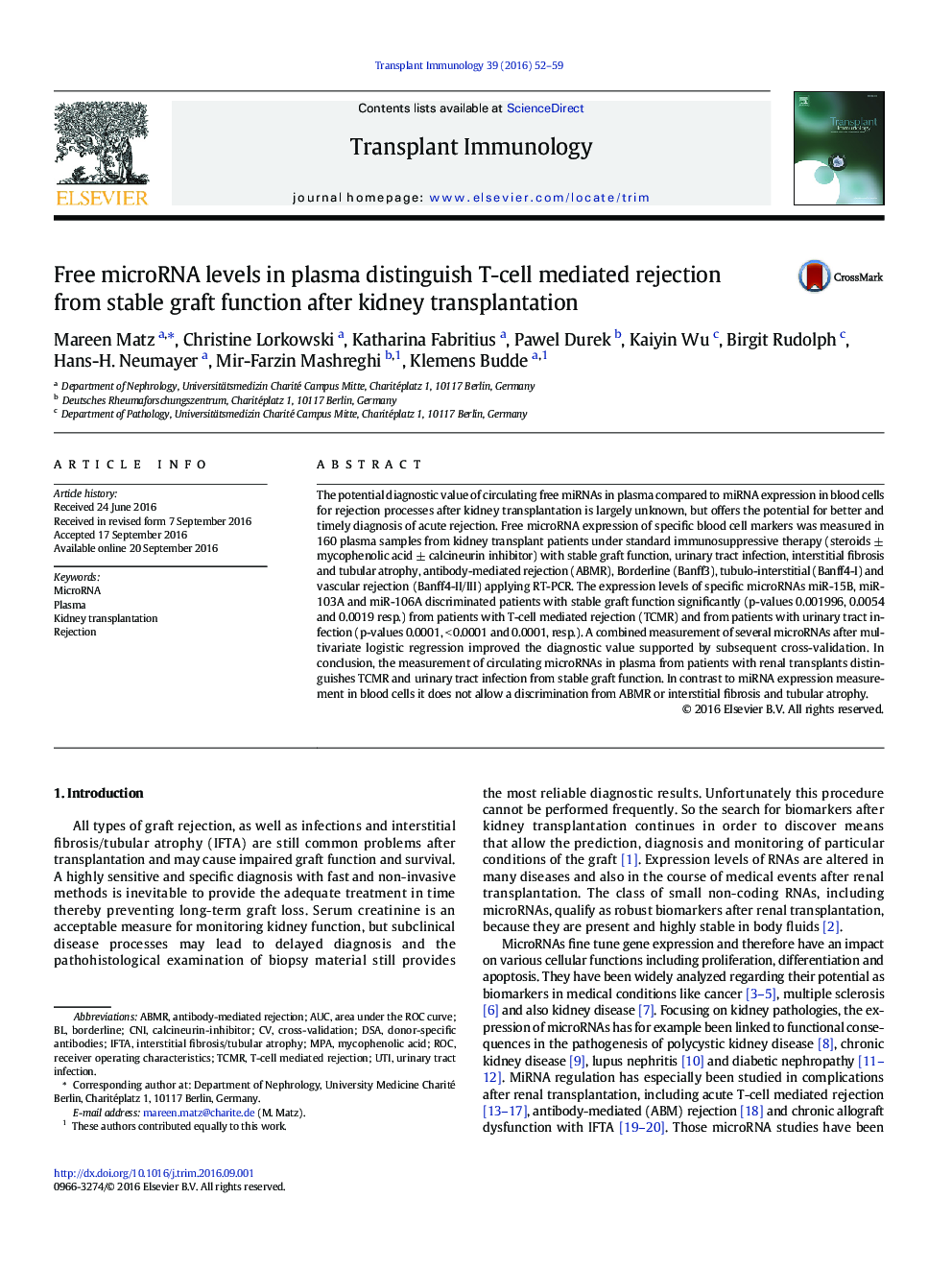| Article ID | Journal | Published Year | Pages | File Type |
|---|---|---|---|---|
| 5670470 | Transplant Immunology | 2016 | 8 Pages |
â¢The diagnostic value of plasma microRNA expression after kidney Tx was assessed.â¢Three microRNAs in plasma discriminate between stable graft function and TCMR.â¢Three microRNAs in plasma do not discriminate between TCMR and ABMR or IFTA.
The potential diagnostic value of circulating free miRNAs in plasma compared to miRNA expression in blood cells for rejection processes after kidney transplantation is largely unknown, but offers the potential for better and timely diagnosis of acute rejection. Free microRNA expression of specific blood cell markers was measured in 160 plasma samples from kidney transplant patients under standard immunosuppressive therapy (steroids ± mycophenolic acid ± calcineurin inhibitor) with stable graft function, urinary tract infection, interstitial fibrosis and tubular atrophy, antibody-mediated rejection (ABMR), Borderline (Banff3), tubulo-interstitial (Banff4-I) and vascular rejection (Banff4-II/III) applying RT-PCR. The expression levels of specific microRNAs miR-15B, miR-103A and miR-106A discriminated patients with stable graft function significantly (p-values 0.001996, 0.0054 and 0.0019 resp.) from patients with T-cell mediated rejection (TCMR) and from patients with urinary tract infection (p-values 0.0001, < 0.0001 and 0.0001, resp.). A combined measurement of several microRNAs after multivariate logistic regression improved the diagnostic value supported by subsequent cross-validation. In conclusion, the measurement of circulating microRNAs in plasma from patients with renal transplants distinguishes TCMR and urinary tract infection from stable graft function. In contrast to miRNA expression measurement in blood cells it does not allow a discrimination from ABMR or interstitial fibrosis and tubular atrophy.
